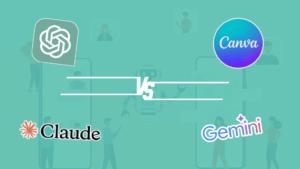
There are countless sites and blogs available on the internet and almost everyone wishes for their content to go viral. However, not everyone is able to find success for one reason or another as not everything you post on the internet has the ability to go viral.
Firstly, it is important to understand what the term ‘viral’ means. In simple words, content (images, articles etc.) that is applauded and gets a huge number of shares (views in return) is said to have gone viral. It has to be clear that content that is appreciated but not shared/liked/viewed might have been good but would not be considered viral.
Here, the main questions remains the same – how and why content goes viral? This is a simple question but the answer to it is not so simple as there is a lot that has to be taken care of and a lot of things need to fall into place for content to go viral.
Seeing a piece of content that has received more than a million shares and then looking at your piece that has been shared by few of your friends might leave you scratching your head. You may already have asked yourself questions like “why that content went viral?” and “what went wrong with my content?”
You may also have read contents that went viral in an attempt to uncover the secrets behind their success. You might have even tried to come up with a similar piece and chances are that it may have sunk into virtual oblivion.
We often come across articles that promise to reveal the secret behind viral content, but most of those articles are ambiguous and often based on gut feelings of an individual. They are not backed up with a proper scientific study.
BuzzSumo studied millions of content pieces recently and uncovered some of the key elements that make contents go viral. It revealed effective formats of popular contents and specific emotions those viral contents tapped into. It also discovered the importance of images in popular contents. Want to find out how? Read on!
Content length does matter
People often wonder how long their content length should be for it to go viral. You would come across loads of answers out there on the web concerning the ideal length of content; however, more of that information is incorrect, abstruse and not supported by a proper study.
You are probably reading this because you already know the importance of content in search rankings and social media sharing. However, to leverage content marketing, you need to write not only a compelling content, but also meet the threshold for an ideal content size.
An analysis of millions of content pieces by BuzzSumo turned out the following findings:
Long-form content (pieces having over 2,000 words) on average amass incredibly more popularity and bag way more shares than short length contents (pieces having less than 2,000 words).
Contents having 0 to 2,000 words per piece received between 4,000 and 5,800 shares on average whereas contents having 2,000 to 10,000 words received 6,800 to 8,300 shares per piece.
It also turns out that Facebook is the most effective and viral medium for content sharing followed by Twitter and LinkedIn.
The bottom line: The longer the content, the more shares it gets.
Make the judicious decision today; instead of writing dozens of short, incoherent content pieces, spend your energy and time on the one grand piece of content that has the potential to bag you shares in thousands if not in millions.
Remember, a 2,000+ words fluffy content isn’t going to go viral. Content length does help, but only when coupled with high content quality. Whatever claims you make in your content, make sure to back them with research, data, books and references. When you provide advices in our post, make sure to tell your readers how to implement those advices.
Playing on emotions
Playing on emotions in content marketing is much more like playing on emotions in our real lives. For example, you will forget what someone said, you would also forget what someone did; however, you would find it hard to forget how someone made you feel. Your content would go viral when you give it the same emotional aspect.
But wait, you need to do it carefully. You must first decide what emotions of your target audience you are going to tap into- positive emotions or negative emotions? Read on to know what is more effective.
Findings from the study showed that people are fed up of content that would trigger their negative emotions. They prefer to share pieces that would tap their positive emotions, and help and inspire them to come out of their negative emotions. Here are the study’s facts:
People love to share content pieces that are awe-inspiring (25 percent), make them laugh (17 percent), amuse them (15 percent) and trigger joy (14 percent). These figures for positive emotions add up to a total of 42 percent, meaning that if your content has the potential to trigger positive emotions, it has 42 percent chance of going viral.
On the other hand, people don’t like negative emotions. They prefer not to share content pieces built on such emotions. Here are figures for negative emotions: sadness (1 percent), anger (6 percent) and empathy for negative experience (6 percent). These numbers sum up to 13 percent, meaning that your content that has the potential to trigger negative emotions has only 13 percent chance of going viral.
In a nutshell, writing and sharing positive and entertaining content pieces that can bring value to our relationship circles, help us demonstrate to our friends that we have great taste, and trigger engagement have greater chances of going viral.
Remember, humans are emotional creatures. We do almost majority of things on the basis of our emotions. Emotions affect our decisions, our actions and our behaviors. Given the importance of emotions in content marketing, if you still adopt a purely rational way to reach out to your audience, chances are that your content marketing will fall flat.
There are millions of unhappy people out there on the Internet, and for you they provide windows of opportunities. Just come up with a positive uplifting and inspirational content that would help those unhappy people to come out of their furrow; now sit back and see your content go viral.
A picture is worth a thousand words
We live in an age of visuals. The use of visuals has transcended our personal lives and made their place in businesses, such as in communications, marketing and businesses’ social pages. Experts have long endorsed the importance of images in contents. Images have the power to make your content go viral, especially on Twitter and Facebook. Here are the findings of BuzzSumo’s study when it comes to images in contents:
On Facebook, twice as many people (64.9 percent) prefer to share a piece of content that has at least one image than content without image (28 percent).
The same holds true for Twitter; majority users (20.4 percent) prefer to share content with at least one image than content without image (9.7 percent).
Take Away: Images are potent. They have the potential to grasp people’s attention and encourage them to share the content. The more images you use with your content, the more the chances for your content to go viral.
The time and effort you put into writing a great piece will go in vain if you choose to go without image. You’d be better off giving your content a little more time by finding some relevant and good quality images than posting plain text.
List it or show it
We live in the middle of massive data, more than ever before. People create billions of content each day, including articles, blogs, images, and videos besides others to tap into the huge market created by the Internet, mobiles devices, innovations in computers and other similar technologies.
We are continuously bombarded with data. We struggle with organizing and classifying the data, and keeping track of information that keep ramming our screens like a flood. Consuming such immense information has turned out to be a daunting task. This is where listing information and infographics come in to relieve us of the headache of data consumption in an age of big data.
Infographics present complex data and information in a visually fascinating format, which makes it potentially viral. It combines text with images and aesthetically appealing designs to communicate complex information in very simple ways.
BuzzSumo’s study found that more people prefer to share content pieces that contain list posts and infographics. Moreover, quizzes were also found to be more effective in compelling people to share your content. Let’s get down to the specifics and figures:
- Contents having lists received 12,000 shares on average.
- Contents having infographics were shared 14,000 times on average.
- Why to articles, what posts, why posts and videos received an average of 6,475 shares.
- All contents combined received an average of 8,000 shares.
The bottom line: Keeping your content simple by judiciously using lists as much as possible and using infographics to present complex data and information are among the secrets of viral content.
Be careful to not bombard your reader with a wall of text and complex data presented in complicated ways. Always go for simplicity because simple is beautiful and beautiful things go viral.
If you think that lists are not applicable to your content, make sure you break your text into small paragraphs, so the reader finds it easy and simple to read and consume. Using subheadings and bullet points are also effective methods to present information in simple ways.
Use the power of influencers
So you spent all the time crafting a piece of content and now you are planning to promote it? Sharing your content on your Facebook and Twitter accounts are good things to start with, but eventually you will find yourself entangled in other works of the day and your content will fail to get enough exposure. Why not hit a short cut when a powerful option is on the table: getting influencers to share your content.
People with huge number of targeted followers play major role in the success of content marketing, found the study by BuzzSumo. These influencers can get your content across to their followers for just a relatively smaller investment. Here are the study’s findings about the impact of influencers in promoting content:
Contents that didn’t get shared by influencers got only 706 shares on average.
Contents that were shared by 1 influencer got 930 shares whereas those shared by 2 influencers got 1210 shares on average.
Contents that got shared by 3 influencers got 1405 shares while contents shared by 4 influencers bagged 1588 shares on average.
And finally, 2776 people on average shared content that were shared by 5 influencers.
The takeaway: Influencers have the power to make your content go viral, so come up with contents that should compel influencers to share them.
Now, the question is: how to bring your content to the notice of influencers in your niche, so they can be compelled to share, like or tweet/retweet your content for free?
Here are some tips to do it:
Mention them within the content: People love to share good things others say about them. The best thing you can do is mentioning the influencers in your niche within the content you are crafting. This move will lure their ego and it would work in majority cases. However, be careful not to nobly magnify them. Start by finding and making a list of top influencers in your industry like professionals who have huge number of followers, relevant resources and sites.
Build rapport: For influencers to share your post, you first need to get on their radar and stay there. Some gestures like commenting on their content, sharing their posts and following them on social media are good tips to start building rapport with influencers.
Interview them: Remember, when you interview someone, you build a good, natural relationship and the interviewee sees you positively. After all you are helping him or her in getting exposure. It is a two-way relationship: the interviewee gains exposure and you cash their credibility. Since you are covering them in your content, influencers are more likely to share the content and help you promote it.
To sum it up, the keys to make your content go viral include the size of your content, emotional aspects you are aiming to target, using visuals, lists and infographics in your content, and last but not least, getting influencers to share your content.
- Never settle for content of less than 2,000 words.
- Play on positive emotions like awe, laughter and amusement within your content.
- Use at least one image with your content (more are better).
- Use lists and infographics to present information and data in your content
- Find and get influencers to promote your content.
So, finally you have uncovered the secrets to make a content go viral. Is there any other content marketing secret you’d like to share with us?
About The Author
Dave Burnett
I help people make more money online.
Over the years I’ve had lots of fun working with thousands of brands and helping them distribute millions of promotional products and implement multinational rewards and incentive programs.
Now I’m helping great marketers turn their products and services into sustainable online businesses.
How can I help you?




